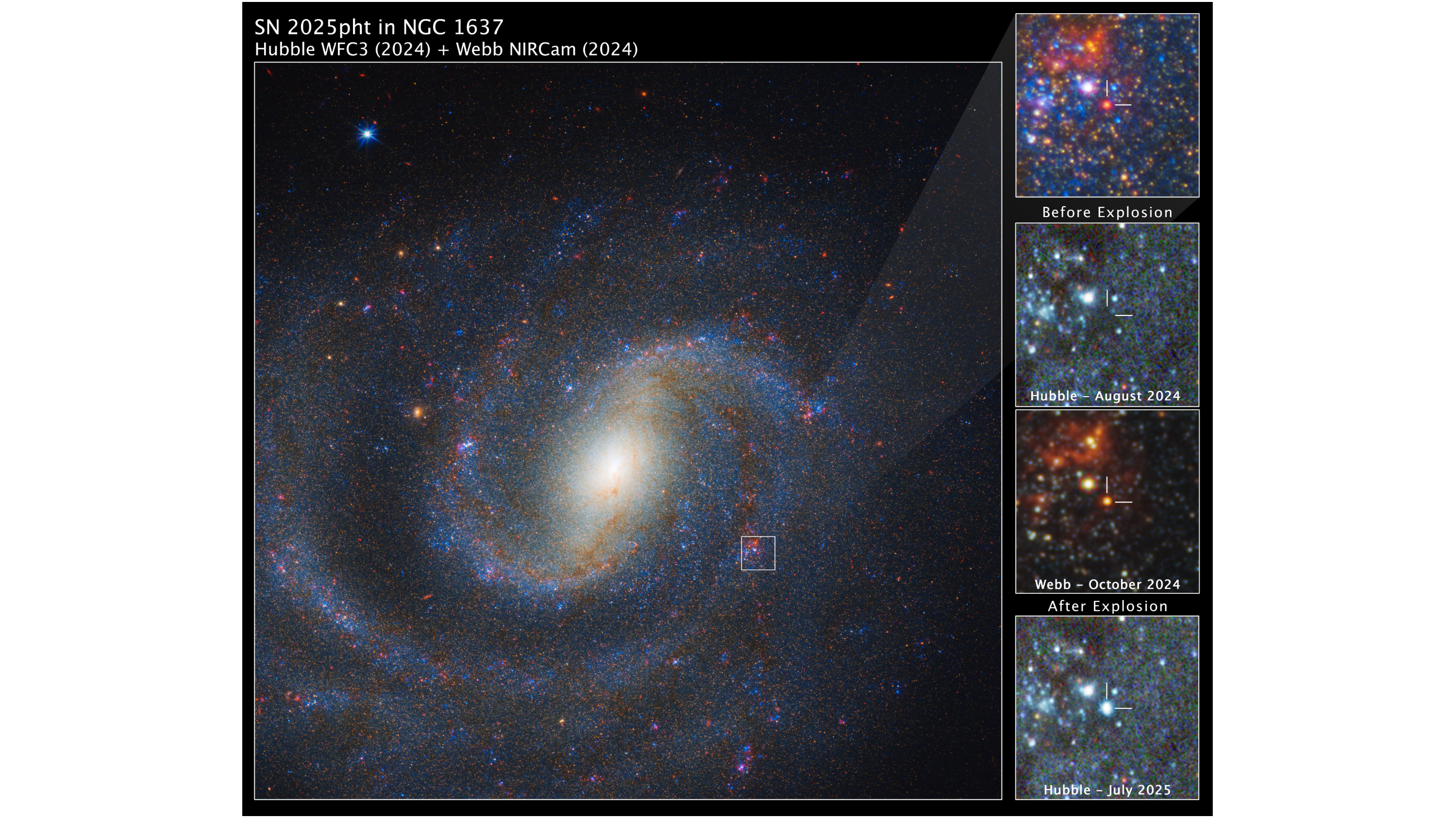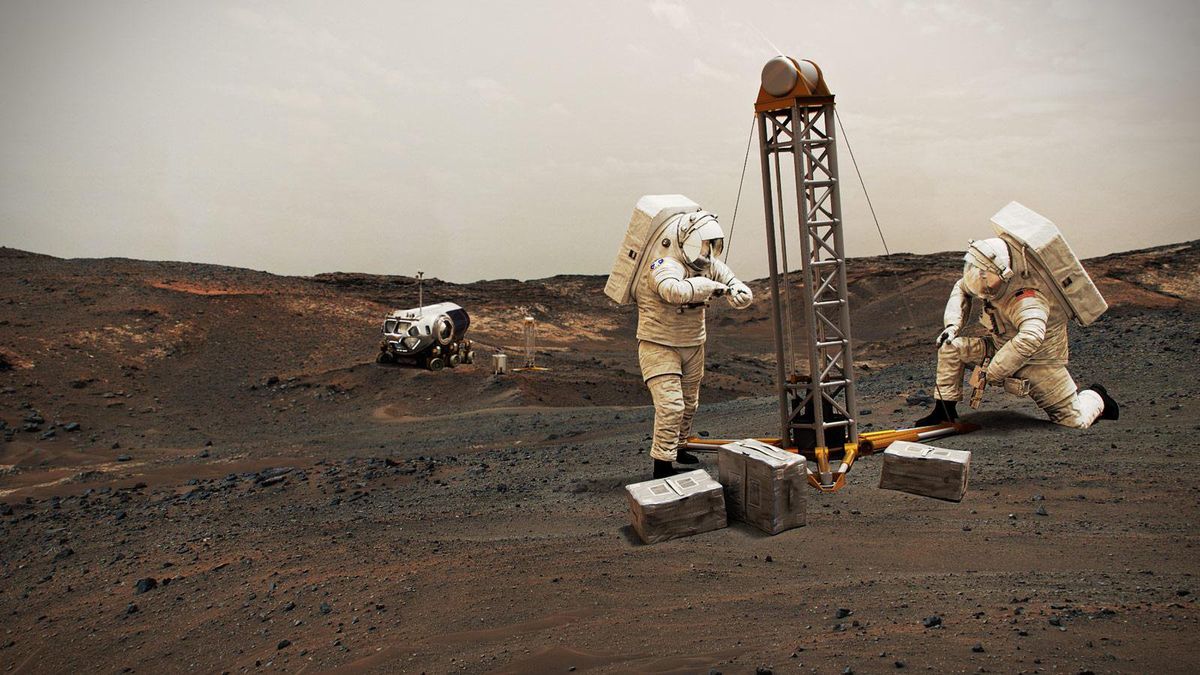For decades, astronomers have searched the skies for a missing population of doomed stars — the massive red supergiants that theory predicts should end their lives in powerful stellar explosions, but somehow rarely seem to. Now, thanks to the James Webb Space Telescope (JWST), the mystery may finally be clearing up, quite literally.
In a new study, a team of astronomers report that they have captured the most detailed glimpse yet of a red supergiant before it exploded. Using JWST's powerful infrared vision, the researchers identified the star that produced a supernova, marking the first time that the powerful space telescope has detected a supernova progenitor.
The findings, published Wednesday (Oct. 8) in The Astrophysical Journal Letters, suggest that many of these enormous stars indeed explode, but are simply hidden behind thick veils of dust that obscure them from the view of most telescopes.
"We've been waiting for this to happen — for a supernova to explode in a galaxy that JWST had already observed," Charlie Kilpatrick of Northwestern University, who led the study, said in a statement. "Only now, with JWST, do we finally have the quality of data and infrared observations that allow us to say precisely the exact type of red supergiant that exploded and what its immediate environment looked like."
The supernova, known as SN 2025pht, was detected on June 29 in a galaxy about 40 million light-years from Earth. Both JWST and the Hubble Space Telescope had imaged this region before the explosion, Hubble dating back as far as 1994 and JWST observing the site twice in 2024. By comparing these pre-explosion datasets, Kilpatrick's team pinpointed the specific star that later detonated, according to the study, which was posted to the preprint archive arXiv on Aug. 14.
To confirm the match, the team carefully aligned the Hubble and JWST images using 36 stars visible in both datasets as reference points, ensuring that every pixel corresponded to the same spot in the sky, the study noted.
They then compared the precise position of the supernova with all sources detected in the older, pre-explosion images. In those earlier observations, they found a single bright, point-like source visible across all JWST images exactly where the supernova later appeared in a post-explosion Hubble image, confirming that the object seen by both telescopes before the explosion was the progenitor star that became SN 2025pht.
Those images revealed a star that was extraordinarily bright and incredibly red — so red, in fact, that it was clear it was blanketed by a dense cocoon of dust. Although the star shone about 100,000 brighter than our sun, its visible light was dimmed by more than 100 times, according to the statement.
"It's the reddest, dustiest red supergiant that we've seen explode as a supernova," study co-author Aswin Suresh, a graduate student in physics and astronomy at Northwestern, said in the same statement.
"That tells us that previous explosions might have been much more luminous than we thought because we didn't have the same quality of infrared data that JWST can now provide," Kilpatrick added.
Stars like SN 2025pht are what astronomers call red supergiants, which are massive stars in the final stage of their lives. When their cores run out of fuel, gravity crushes them inward, triggering supernovae that leave behind a neutron star or black hole.
The best-known example of such a star is Betelgeuse, the bright red shoulder of Orion and the closest known red supergiant, which is speculated to explode within the next 10,000 to 100,000 years.
Astronomers have long puzzled over the apparent lack of luminous red supergiant stars in pre-explosion images, even though models predict that these stars should dominate the population of core-collapse supernova progenitors. The new results suggest that many may simply be hidden behind thick layers of dust, rendering them invisible to optical telescopes.
"I've been arguing in favor of that interpretation, but even I didn't expect to see such an extreme example as SN2025pht," Kilpatrick said.
The team also found that the dust around the progenitor star was unusually rich in carbon, rather than the silicate-based dust typically seen in red supergiants. This may indicate that powerful convection deep inside the star dredged up carbon from its core during its final years, changing its chemistry just before it blew apart, the study notes.
Beyond solving an old mystery, the discovery opens a new window into the life cycles of massive stars, researchers say. With JWST and the upcoming Nancy Grace Roman Space Telescope, astronomers will be able to track more of these hidden giants in their final moments.
"With the launch of JWST and upcoming Roman launch, this is an exciting time to study massive stars and supernova progenitors," Kilpatrick said in the statement. "The quality of data and new findings we will make will exceed anything observed in the past 30 years."
.png)
 German (DE)
German (DE)  English (US)
English (US)  Spanish (ES)
Spanish (ES)  French (FR)
French (FR)  Hindi (IN)
Hindi (IN)  Italian (IT)
Italian (IT)  Russian (RU)
Russian (RU) 









Comments